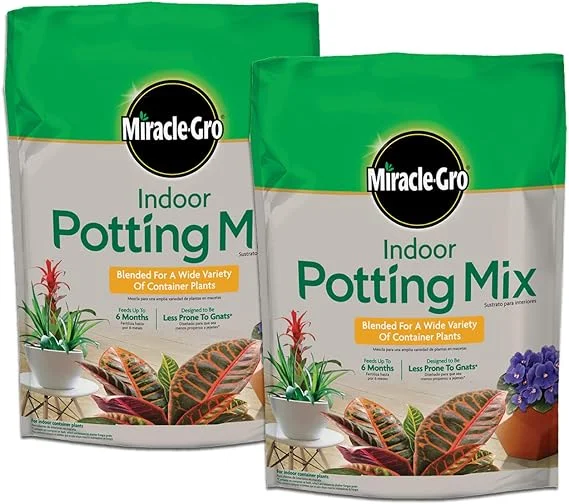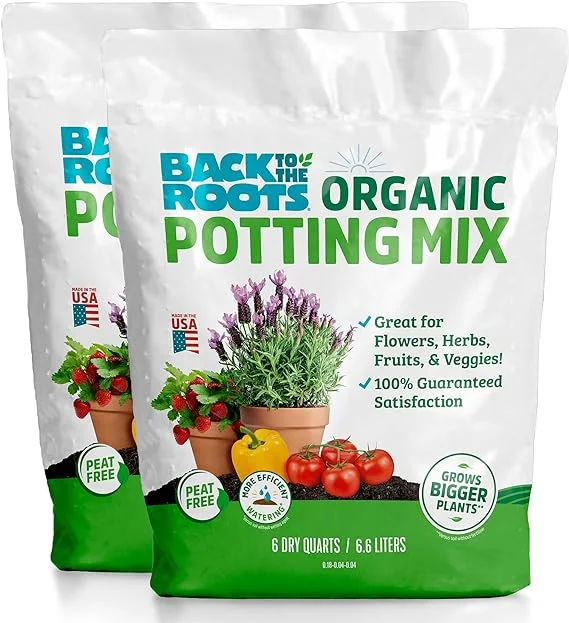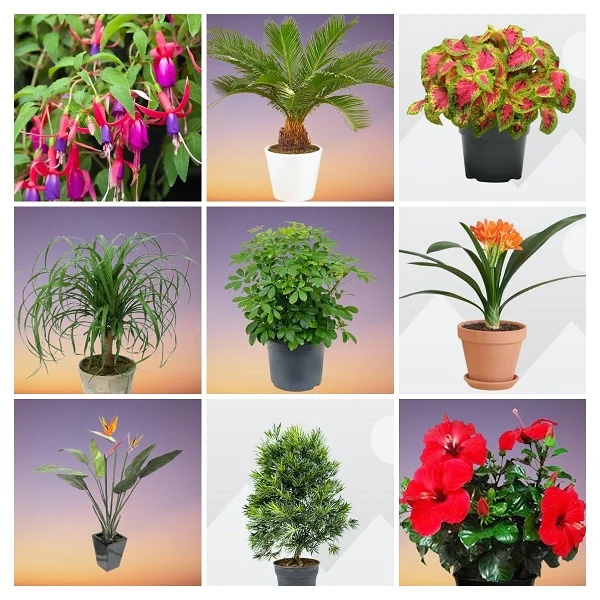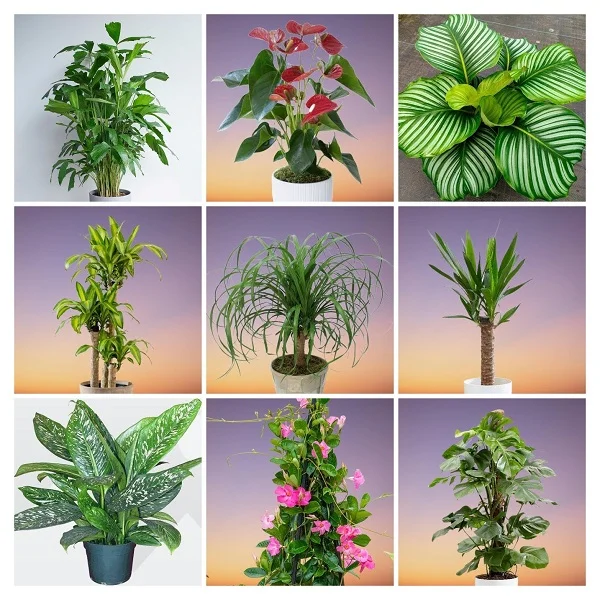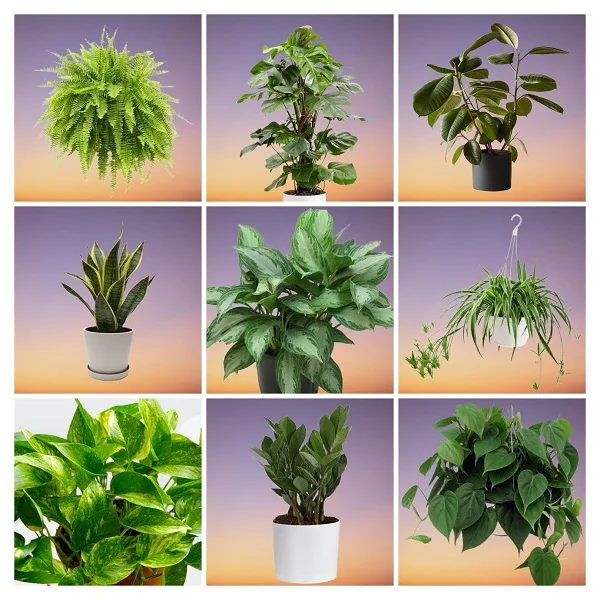Beloperone guttata (Mexican Shrimp Plant) Care Indoors, Propagation, Problems and Remedies
Some links in this post may be affiliate links
Mexican Shrimp Plant (Beloperone guttata) grows best in bright light with some direct sunlight, warm and humid conditions and moderately moist, rich, well-drained soils coupled with monthly feeding in the growing season.
Beloperone guttata also called Red Shrimp Plant, Shrimp Plant or False Hop is one of the popular flowering plants with weak branching stems and a reddish-yellow spike from which white flowers emerge.
The spike is made up of reddish-yellow bracts and short-lived white flowers which emerge sequentially. Red Shrimp flowers from spring through summer.
The common name, 'Red Shrimp Plant', is in reference to the layered (overlapping) bright reddish-yellow bracts which resemble a shrimp's layered scales.
Mexican Shrimp plant is similar to Golden Shrimp Plant (Pachystachys lutea) which features yellow bracts instead of reddish.
The name, 'Beloperone', comes from, 'Belos', greek for 'arrow' and 'perone', greek for 'bond' in reference to arrow-shaped leaves as they emerge from the stems.
Beloperone guttata has been renamed to Justicia brandegeeana in honor of the American botanist Townshed Stith Brandegee (1843-1925) who studied plants of California and Mexico.
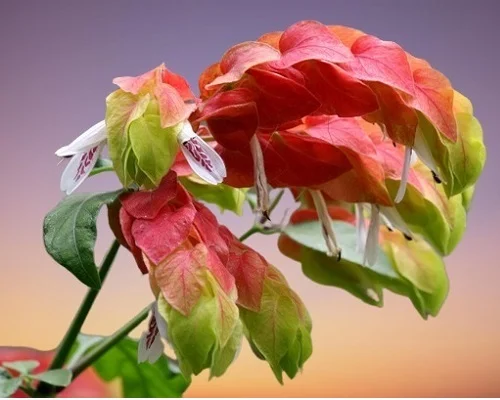
Botanical name: Beloperone guttata
Synonym: Justicia brandegeena
Family: Acanthaceae
Common names: Mexican Shrimp Plant, Red Shrimp Plant, Shrimp Plant, False Hop
Origin
Beloperone guttata also called Justicia brandegeeana is native to Mexico, hence the common name. The plant has been naturalized in Florida, USA.
Size
Mexican Shrimp Plant can grow to a height of about 1-3 feet and the same width. The leaves are oval, light-green and about 1.5-3 inches long.
Flower
The inflorescence is made up of flowers which emerge from bracts (modified leaves) that form off the stems. They start off white but change color to somewhere between pale-pink to salmon with exposure to sunlight.
Is Mexican Shrimp Plant poisonous?
There are no reported cases of poisoning by Mexican Shrimp Plant (Beloperone guttata), however, it should not be eaten.
Where to Buy
Mexican Shrimp Plants are a great addition to your plant collection. They are readily available online on Etsy (Link to Etsy).
How do you care for Beloperone guttata indoors?
To care for Beloperone guttata indoors, provide bright light with 4-6 of direct sunshine, average temperature of 18-240C, humidity of 60-70% and moderately moist, fertile, well-drained soils coupled with monthly feeding during the growing season.
Mexican Shrimp Plant care requires regular pruning to keep it neat, to reduce pest and disease infestation, to encourage bushy growth and to rejuvenate growth. Repotting is only needed when it becomes pot-bound. Keep reading for more on these growing conditions and how to achieve them.
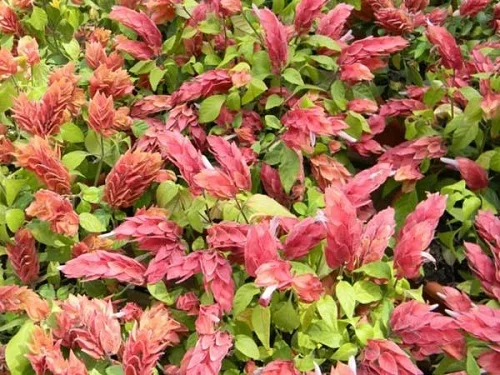
Watering
How often should I water my Mexican Shrimp Plant?
Water your Mexican Shrimp Plant thoroughly during the growing season and allow two-thirds of the soil to dry out between waterings. Keep the soil moderately moist and avoid soggy soil to prevent yellowing and rotting.
Cut down on watering during the cold season to maintain the soil slightly moist as growth is minimal at this time. Do not allow the soil to dry out completely as it can lead to wilting and leaf drop.
Use room-temperature water to avoid shocking the roots. Ensure that the water is free of chlorine and other dissolved chemicals to prevent brown leaf edges.
Ascertain that the soil is free-draining and the pot has a drainage hole to avoid getting soggy soil as it can lead to root-rot and death of the plant.
Light Requirements
Mexican Shrimp Plant thrives in bright light with 4-6 hours of morning or evening sunshine to enhance bracts color. Keep it away from too hot direct sunshine as it can scorch the leaves.
If light is not enough, the plant will become leggy with wide spaces between the leaf nodes and will not bloom. You may grow Beloperone guttata under grow lights where the natural lighting is not sufficient.
Turn the pot regularly to ensure that the Shrimp Plant receives light on all sides for even growth.
Mexican Shrimp Plant can also be grown outside under direct sunshine but it needs to be acclimated gradually before being exposed to direct sunshine to avoid sunscorch.
Temperature and Humidity
Beloperone guttata flourishes in an average warmth of 18-240C. Keep it away from drafty conditions as extreme temperatures can cause stunted growth and leaf drop.
Mexican Shrimp Plant requires a humidity of 60-70% which mimicks its natural environment. Low humidity will result in brown leaf tips and edges.
To increase humidity, set the pot on a wet pebble tray, use a humidifier or group the plants together. Maintain good air circulation to minimize fungal diseases.
Fertilizer
What is the best fertilizer for Mexican Shrimp Plant?
Feed Mexican Shrimp Plant with a phosphorous-rich, water-soluble fertilizer every 3-4 weeks in spring and summer to promote flowering. Avoid too much fertilizer which can lead to yellowing and leggy growth.
Do not feed in the cold season (fall and winter) as growth is minimal at this time and feeding at this time can cause fertilizer burn; browning leaves.
Potting Mix
What is the best soil for Mexican Shrimp Plant?
The best potting mix for Mexican Shrimp Plant is a well-draining, organic-rich potting mix to prevent it from getting soggy while providing the required nutrients. A blend of peat moss (for moisture retention), perlite or sand (for drainage), and compost (for nutrients) is fitting for this plant.
Repotting
Repot Mexican Shrimp Plant every 2-3 years at the beginning of the growing season into a pot one size larger than the current, only when root-bound as it blooms best when pot-bound.
Ensure that the pot has a drainage hole and the soil is free-draining soil to avoid getting soggy soil as it can lead to root-rot. Check out these pots with drainage holes on Amazon.
Do not repot a plant that is in flower as the repotting shock can shorten the flowering period. The large plants can be divided at repotting to propagate new plants.
Pruning
Pruning Mexican Shrimp Plant involves:
- Removing dead blooms and leaves to maintain the plant neat and discourage pest and disease infestations.
- Pinching back young stems to encourage branching.
- Cutting back the leggy stems at the beginning of the growing season to rejuvenate growth and also promote flowering as blooms emerge from the stem tips.
Beloperone guttata Propagation
Beloperone guttata (Mexican Shrimp Plant) is propagated at the beginning of the growing season from stem cuttings or by plant division.
1. Propagating Mexican Shrimp Plant from stem cuttings
- With a sharp, sterilized pruning scissors, take 4-6 inches stem cuttings from a healthy plant.
- Strip off the lower leaves of the cuttings and coat the lower part of the stem with a rooting hormone to hasten rooting.
- Fill a rooting container with a well-draining soil and moisten it slightly. Ensure the container has drainage holes to prevent the soil from getting soggy to avoid rotting.
- Carefully insert the coated cuttings in the moist soil and lightly firm the soil around the cutting.
- Cover the set up with a clear plastic bag or sheet to create a greenhouse effect to hasten rooting. A warm and humid environment is needed for rooting to occur.
- Place the set up in bright light but away from direct sunlight to avoid cooking the cuttings.
- Maintain the soil moist through out until the cuttings are rooted. Rooting should occur in about 6-8 weeks and is indicated by new growth.
- Once rooted, remove the plastic cover a little every day over a period of 2 weeks to acclimate the new plants to normal indoor growing conditions.
- Allow the new plant to be well established before transplanting after which you can begin routine care.
2. Propagating Mexican Shrimp Plant by plant division
- Water the plant thoroughly at least 1 day before to make it easier to divide and also hasten establishment. A well hydrated plant suffers less shock and takes a shorter time to take root.
- Carefully divide the plant into sections while ensuring each section has enough roots.
- Fill small pots halfway with free-draining soil and moisten it lightly.
- Pot the sections in the moist soil while filling and firming the soil around the base and maintain them at the same level as in the previous pot.
- Place the set up in a warm, brightly-lit place away from direct sunlight.
- Maintain the soil moist until the new plant is well established after which you can begin routine care.
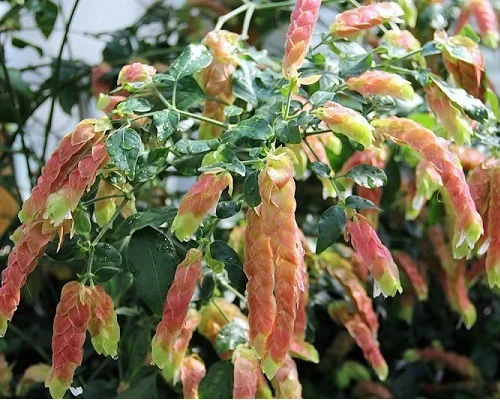
Beloperone guttata Problems & Solutions
Beloperone guttata (Mexican Shrimp Plant) problems are yellow leaves, dropping leaves, lack of blooms, wilting and drooping leaves, brown leaf tips and edges, pests and diseases. Keep reading for more on these problems and how to fix them.
Yellowing leaves
Why are the leaves on my Mexican Shrimp Plant turning yellow?
Some of the causes of yellow leaves on your Mexican Shrimp Plant are overwatering, underwatering, soggy soil, underfeeding, too little light, and hot sunlight.
How to fix it
Overwatering: Water when two-thirds of the soil to dry out. Do not water on a schedule.
Underwatering: Maintain the soil moderately moist but do not let it dry out completely.
Soggy soil: Ascertain that the pot has a drainage hole and that the soil if free-draining.
Underfeeding: Feed with a phosphorous-rich, water-soluble fertilizer every 3-4 weeks in spring and summer but do not feed in fall and winter.
Too little light: Move the plant to a brighter spot or use a grow light if the natural light is not enough.
Hot sunlight: Position the plant in a more shaded place away from hot midday sunshine.
Dropping leaves
Dropping leaves on Mexican Shrimp Plant is caused by dry air, incorrect watering, improper feeding, and cold drafts.
How to fix it
Dry air: Set the pot on a wet pebble tray or use cool mist humidifier to raise humidity.
Incorrect watering: Water the plant when the top 2-3 inches of soil feel dry but do not allow the soil ball to dry out completely.
Improper feeding: Feed the plant every 3-4 weeks in the growing season with a phosphorous-rich, water-soluble fertilizer but do not feed in the cold season.
Cold drafts: Keep the plant away from drafty windows and doorways, air conditioning units, and others to maintain a warmth of 18-240C.
Lack of blooms
Why is my Mexican Shrimp Plant not blooming?
Lack of blooms on Mexican Shrimp Plant is due to low light, nutrients deficiency, underwatering, dry air, and temperature stress.
How to fix it
Low light: Move the plant to a brighter spot where it will receive bright light with some morning sunshine or instal a grow light if the natural lighting is not adequate.
Nutrients deficiency: Feed the plant with a phosphorous-rich, water-soluble fertilizer every 3-4 weeks in spring and summer to promote flowering.
Underwatering: Maintain the soil moderately moist in spring and summer and slightly moist in fall and winter. Do not allow the soilball to dry out completely.
Dry air: To elevate humidity, set the pot on a wet pebble tray, use a humidifier or group the plants together.
Temperature stress: Keep the plant away from drafts to avoid extreme temperatures.
Wilting and drooping leaves
Wilting and drooping leaves on Mexican Shrimp Plant is caused by underwatering, dry air, and extreme temperatures.
How to fix it
Underwatering: Water when the top 2-3 inches of the soil dry out and do not let the soilball dry out completely.
Dry air: To heighten humidity, set the pot on a wet pebble tray, use a humidifier or grow the plant in a well-lit bathroom.
Extreme temperature: Keep the plant away from drafts coming from heat sources, AC units, drafty windows, windy doors and others.
Brown leaf tips and edges
Brown leaf tips and edges on Mexican Shrimp Plant is due to low humidity, inconsistent watering and soggy soil.
How to fix it
Low humidity: Set the pot on a wet pebble tray or use a cool mist humidifier to upscale humidity.
Soggy soil: Use a pot that has a drainage hole and a well-draining soil.
Pests
Common pests on Mexican Shrimp Plant are aphids, whiteflies and spider mites.
How to fix it
- Isolate the affected plant to prevent spread to the other plants.
- Treat the plant with neem oil or insecticidal soap as per the manufacturer's instructions.
- Regularly check underneath the leaves for these pests and carry out timely control measures.
- Keep the plant properly pruned and raise humidity to discourage pest infestation.
Diseases
Mexican Shrimp Plant is prone to:
How to fix it
1. Leaf spot disease which is enhanced by soggy soil and overwet conditions. The disease presents as dark brown or black leaf spots.
- Remove and burn the affected parts to reduce the risk of spread to the rest of the plants.
- Spray the affected plant with a systemic fungicide and ensure to cover all the parts with the fungicidal solution.
- Keep the plant on the dry side, do not mist it and ensure good air flow.
- Use a pot with a drainage hole and well-drained soil.
2. Root-rot disease which are prevalent in overwatered soil coupled with poor air circulation. It is characterized by yellowing and wilting of the leaves which is rapidly followed by browning and plant collapse.
- Carefully slip the plant out of its pot and inspect the roots.
- Trim the brown-black, mushy roots and treat the healthy roots with a copper-based fungicidal solution as per the instructions on the label.
- Disinfect the pot with the fungicidal solution or use a fresh pot to repot the plant in fresh, well-draining soil.
- Do not water the plant immediately and keep it dry for 5-7 days before you can resume watering.
- Use a pot with a drainage hole and well-draining soil to prevent the soil from getting soggy.
- Cut down on watering in fall and winter as growth is slowed at this time; keep the soil slightly moist.
Conclusion
Beloperone guttata (Mexican Shrimp Plant) is a stunning addition to any indoor garden, rewarding you with year-round blooms if cared for properly. By providing adequate light, well-draining soil, humidity, and regular maintenance, you can enjoy this vibrant plant without much trouble. Troubleshoot common issues early, and your shrimp plant will flourish beautifully in your home.
You liked it? Share on social media.
Related Content
Amazon Associates Disclosure
Homeplantsguide.com is a participant in the Amazon Services LLC Associates Program, an affiliate advertising program designed to provide a means for sites to earn advertising fees by advertising and linking to amazon.com.

